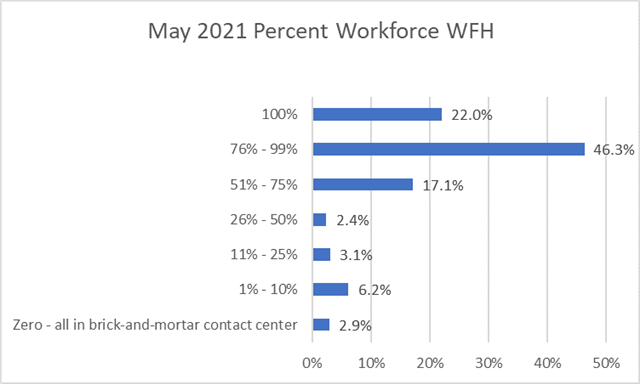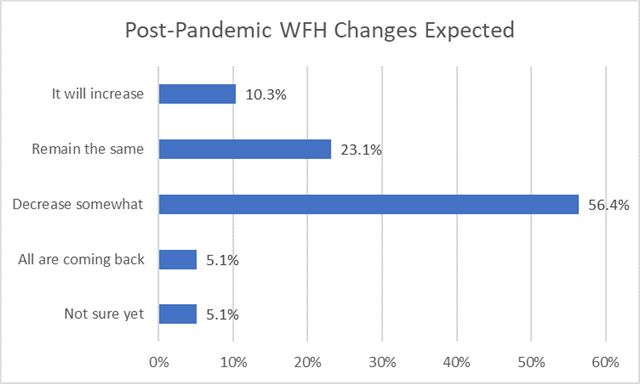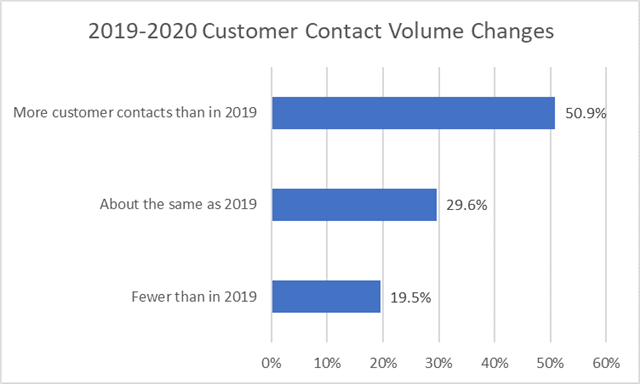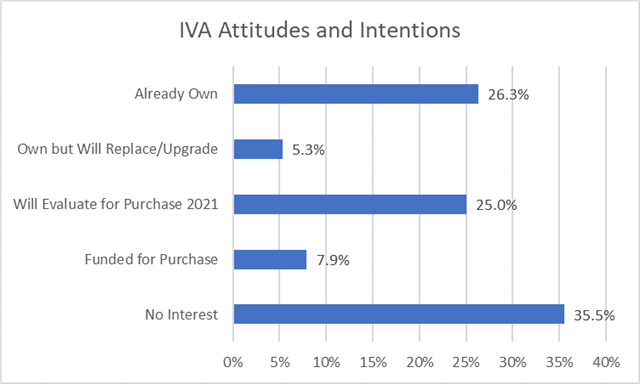

By Paul Stockford, Chief Analyst, Saddletree Research
I’ve been covering the contact centre industry since my career as an analyst began at Dataquest back in the dark ages—1989. After 30 years I thought I’d seen pretty much everything from an industry perspective. That was until 2020 came along.
I won’t spend a lot of time reliving 2020 and reviewing what we all already know, but from an analyst perspective it was a year of unexpected industry twists and turns. What a lot of us thought was important turned out to be not that important, and vice versa. And we all learned how to live in the virtual world.
One of the unexpected surprises of 2020 was the surge in demand for Intelligent Virtual Agents (IVAs) in the contact centre. IVAs have been around for a long time. Often called “bots” or “chatbots” the first chatbot was invented at MIT in 1960 and used natural language processing (NLP) to match patterns with user input to accomplish simple tasks.
As bots evolved into IVAs, their role in the customer service industry became less of a novelty and more of a serious consideration. IVAs have been deployed in contact centres for the past 20 years or so, usually in very specific and specialised applications in a handful of vertical markets. All that, however, seemed to take a fast and dramatic turn in 2020, which I discussed during my session at Verint Engage this year.
Verint’s Engage customer conference is one of my favourite events of the year. I’ve been a speaker at Engage for so many years, I go back to when Engage was called Driving Innovation. In 2021, Engage was, of course, a virtual event as it was in 2020, but I was still able to virtually share some of the results of Saddletree Research’s annual survey of contact centre professionals, conducted in partnership with the not-for-profit National Association of Call Centres (NACC), located at Middle Tennessee State University.
This survey has been conducted every year since 2009 and has a confidence level of 95 percent with a margin of error of slightly less than four percent.
Our 2021 survey revealed a remarkable growth in demand for IVAs, not just as a customer service vehicle but also as a means of supporting the explosive growth in the work-from-home (WFH) workforce. IVAs are being deployed as virtual assistants to WFH agents because they’re able to gather information from knowledge management systems in real time as agents are on customer calls. IVAs are becoming indispensable as support tools for agents who work remotely. Figure 1 below illustrates the population of WFH agents as of May 2021.

Figure 1: Contact Centre WFH Population as of May 2021
Source: Saddletree Research
97 percent of the North American contact centre currently has some or all of their agent workforce working from home, indicating a potentially strong demand for virtual assistants for these remote workers.
Figure 2, below, illustrates expected changes in the WFH workforce population once the COVID-19 pandemic is behind us and we return to some form of normalcy in the fully vaccinated contact centre.

Figure 2: Expected Changes in the Post-Pandemic WFH Population
Source: Saddletree Research
The data indicates that the vast majority of the industry, nearly 90 percent, will keep some or all of their agents working from home. By extension, we can assume that this will continue to be a strong factor in driving the demand for IVAs as virtual agent assistants.
On the customer service side of the argument, our survey revealed that the majority of contact centres experienced an increase in customer contacts during 2020, as shown in Figure 3.

Figure 3: 2019 to 2020 Changes in Customer Contact Volume
Source: Saddletree Research
Short of hiring additional WFH agents to field the increase in customer contacts that occurred in 2020, the only other option available to cover this increase appears to be the deployment of IVAs, which our survey results indicate was the solution sought by contact centre management.
Among the other questions we asked was for respondents to rate their current attitudes and/or intentions toward IVAs. The results are indicated in Figure 4.

Figure 4: 2021 Attitudes and Intentions Regarding IVAs
Source: Saddletree Research
The survey results show about 30 percent of the market currently using IVAs, with five percent looking to replace or upgrade their current solution. It’s likely that those looking to upgrade are among the early adopters and are now seeking IVAs with greater capabilities.
About eight percent of the market has already funded IVAs for purchase in 2021. IVAs lead the “Funded for Purchase” category in our survey, meaning more contact centres have funded IVAs for purchase in 2021 than any other contact centre solution.
According to Dictionary.com, “Imperative” is defined as something that is absolutely necessary or required; unavoidable. That definition is an accurate description of the state of IVAs in the contact centre today. IVAs rank at the top of the list of post-pandemic contact centre imperatives.